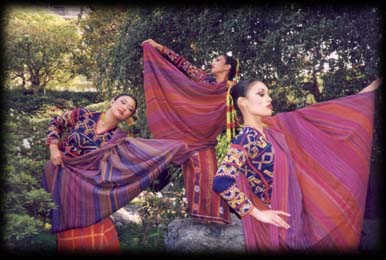
Beyond 2000
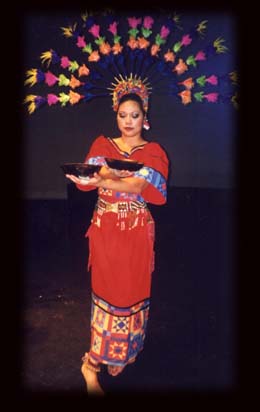
W
H
A
T
S
H
O
U
L
D
M
I
S
S
P
H
I
L
I
P
P
I
N
E
S
W
E
A
R
?
T
H
E
T
E
R
N
O
*
T
H
E
M
A
R
I
A
C
L
A
R
A
*
M
E
S
T
I
Z
A
D
R
E
S
S
*
M
U
S
L
I
M
P
R
I
N
C
E
S
S
B
E
A
D
E
D
E
N
S
E
M
B
L
E
W
I
T
H
P
A
R
A
S
O
L
*
I
F
U
G
A
O
K
A
L
I
N
G
A
G
O
D
D
E
S
S
M
O
T
I
F
*
F
I
E
S
T
A
F
I
L
I
P
I
N
A
*
B
A
R
O
A
T
S
A
Y
A
*
Y
A
K
A
N
T
R
I
B
A
L
W
E
D
D
I
N
G
E
X
T
R
A
V
A
G
A
N
Z
A
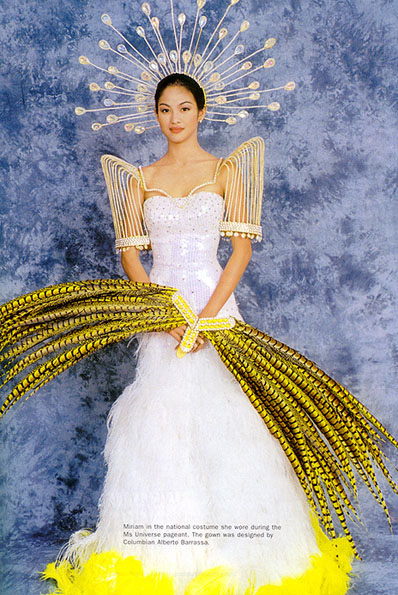
the national costume parade. As each contestant introduces herself in her native costume, we are given a quick,
fleeting glimpse of her country's culture.
Truly a brief lesson in humanities with-
out leaving the comforts of home!
The Philippines has always been known for the traditional butterfly sleeved
TERNO worn and popularized by candi-
dates over the years. True to fact, no one else can give justice to the dress ex-
cept the Filipina.
Over the years, more and more candi-
dates have tried other alternatives, draw-
ing inspiration from the style of native tribes. These have met with varying
success. Ruffa's 'Sarimanok' at Miss
World was a success, but Nina's 'Ibaloy
Fantasy' at the recent Miss Universe was
a disappointment.
Should our delegates return to the basic
style of the TERNO or should they con-
tinue to experiment?
The National Costume debate goes on!
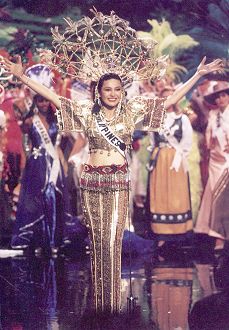
U
S
T
S
A
Y
N
O
!
gear? Sun goddess? Flower Queen? A peacock's tail
gone bad? The dress itself is a terrible injustice! De-signed by a Colombian, the traditonal terno looks
more South American than Southeast Asian. Even the
hand held concoction of feathers plucked from some
South American bird does not make sense! Miriam, are you getting ready to drive the flies away? The
butterfly sleeves look like a bird cage! Was this part of the design or the designer just ran out of fabric?
A lesson to learn: next time, just say 'NO!'
that never was. Nina, is that a lampshade you have on top of your head or a small scale version of the 'bahay kubo?' The
costume itself does not tell anything about the Philippines! The dress is sexy, I agree.But simply too plain,too drab, unattractive and looks like they were recycled from those seashell curtains used in many of Manila's roadside restaurants. Nina, pretty Nina,you should have just said, 'NO!'
JUST BEEN SOLD!
is a nightmare! Consider the headdress that vaguely resembles a satellite dish in its early stages of construction and the gold beaded costume that made her look like an overdressed patron saint rather than a beauty queen.
Charlene is beautiful, the national costume, sorry to say is simply awful! Charlene, go back in time and just say, 'NO!'
tribes in the country. Which of these do you think best suits the image of MISS PHILIPPINES?
EEE
LLL
PPP
! ! ! !
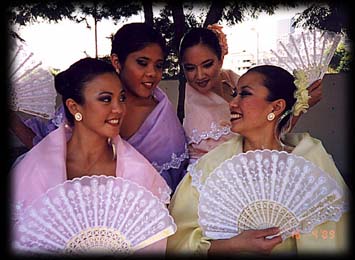
A Mestiza Dress
during the Spanish era and was traditionally
worn with a matching neck scarf worn over the shoulders. The hands are kept busy with a delicate fan otherwise known as the ornate 'abaniko' that not only helped during the hot summer months but also added to the overall feminine touch.
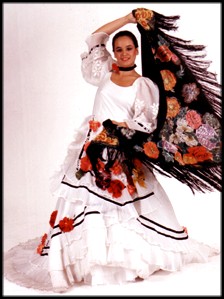
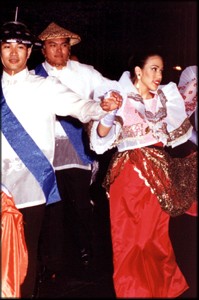
style of the mestiza dress. The full
skirt, the parasol, the abaniko, the
shoulder scarf, all attest to the great success of this enduring legacy from four hundred years of Spanish rule. Typically an aristocrat's dress, the masses also wore their own version, albeit not as grand and ornate as their richer counterparts have. This dress is truly a genuine Filipino/Spanish garb seen nowhere else but in the Philippines!
E
N
O
R
I
T
A
S
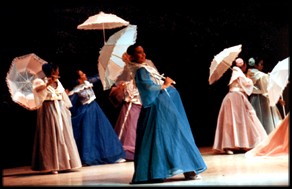
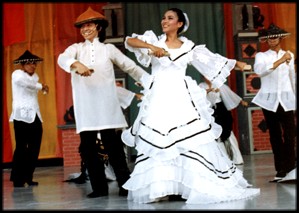
O
L
O
V
E
L
Y
H
A
R
M
I
N
G

Homage to the Sultan
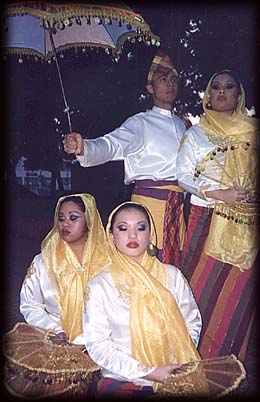
A
N
C
E
W
I
T
H
A
P
R
I
N
C
E
S
S
for their colorful, vibrant fabrics that reflect the diversity of the different tribes that comprise this region. A long piece of cloth reminiscent of the
Indian sari, is worn and draped over an equally colorful skirt known as the 'malong.' At times, a veil is worn symbolizing their feminine virtues. The colorful fabrics used reflect the various ethnic groups that comprise Mindanao, of which the Muslim culture dominates.
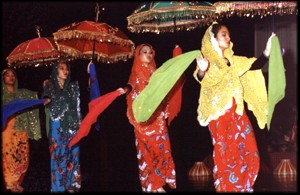
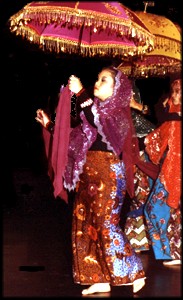
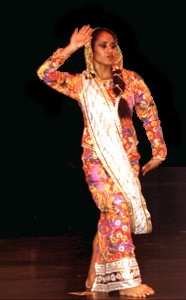
beautifully beaded umbrellas,vibrant fabrics, graceful movements, and stylish way of wearing the malong.
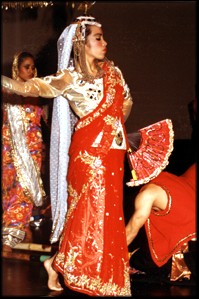
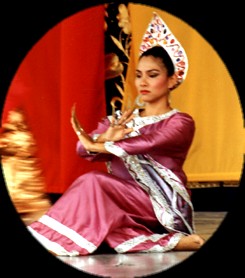
'janggay' or brass fingernails as a sign that they have already been to Mecca. The attachments actu-
ally give the fingers an elongated
appearance which greatly affects
the impact of the costume. The
headdress is reminiscent of the
silhoutte of the mosque, the re-
vered Muslim house of worship.
Lanao women in addition, wear
an anklet with bells or 'singkil'
which seem to compliment their
gestures with sweet chimes.
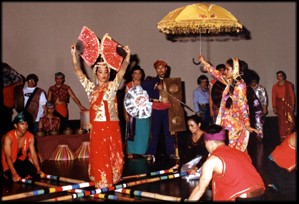
of Lanao are
very expres-
sive of their
love for both
costume and
dance. Full
beadwork on everything is not unusual.
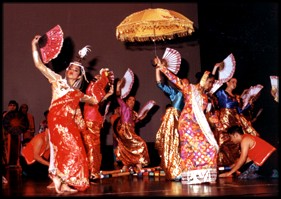
A Goddess Descends
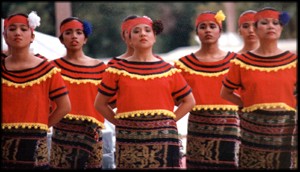
usually one piece of cloth wrapped around the waist and beads and other semi-precious stones are used for the jewelry.
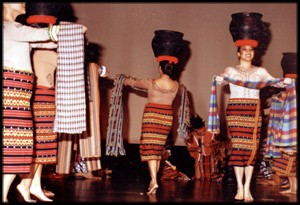
N
I
Q
U
E
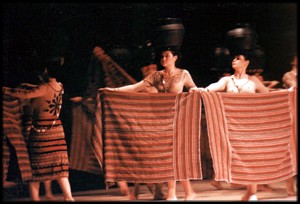
N
U
S
U
A
L
T
M
O
S
T
grace and skill as they dance with
earthen jars perfectly balanced on
their head while skillfully displaying handwoven fabrics showcasing
their rich cultural heritage. Fabrics
are earthen in design, reflecting the
tribe's oneness with nature.
X
O
T
I
C
!
THE FOREST MAIDENS OF THE FOREST MAID
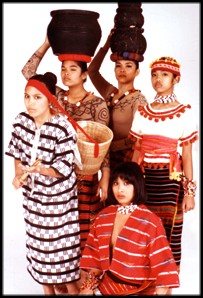
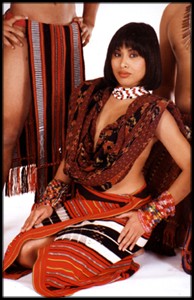
common at
all to find
bare-cheasted
women among the Kalingas. Most of the time though,
only a strip of cloth or a string of necklaces cover their chest.
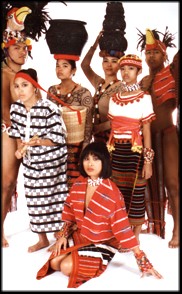
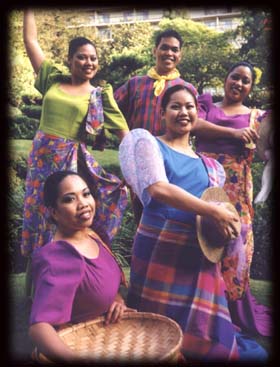
terno and the maria clara can be seen here, all in varying prints, from bold stripes to Madras plaids. The
costumes are accompanied by native handiwork, like the woven hat or 'salakot,' and the local wooden sandals. A native pan or 'bilao', completes the look.
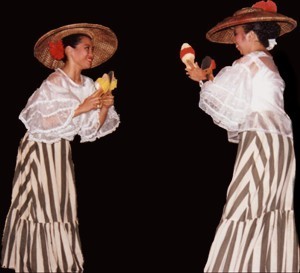
I
E
S
T
A
F
I
E
S
T
A
I
E
S
T
A
F
I
E
S
T
A
I
E
S
T
A
F
I
E
S
T
A
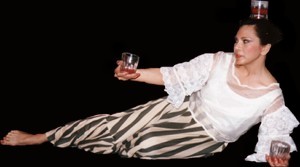
To the near left is a most unusual, yet unique costume that includes oil lamps skillfully balanced on the head and held in both hands. This is truly amazing! Nowhere else does this exist. An overlayer of skirt, usually of a floral design, is also used to compliment the floor length skirt
underneath.
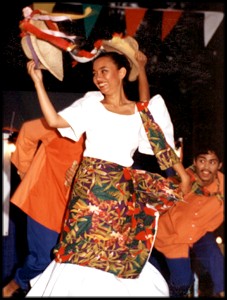
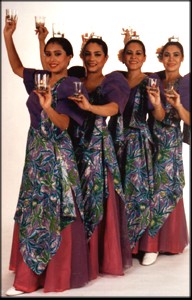

Marriage in Heaven
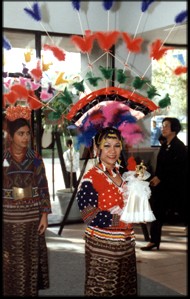
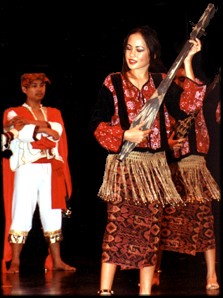
on their wedding day to celebrate their unending fascination
with nature and the way it shapes their destiny. Costumes in- volve a lot of weaving, appliques, prints and trinkets.
M
O
D
E
R
N
T
W
I
S
T
T
E
R
N
O
W
I
T
H
A
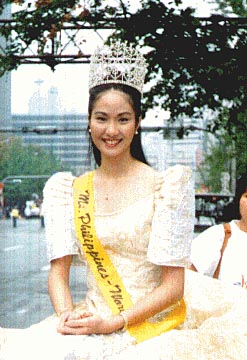
A
T
I
M
E
L
E
S
S
C
L
A
S
S
I
C
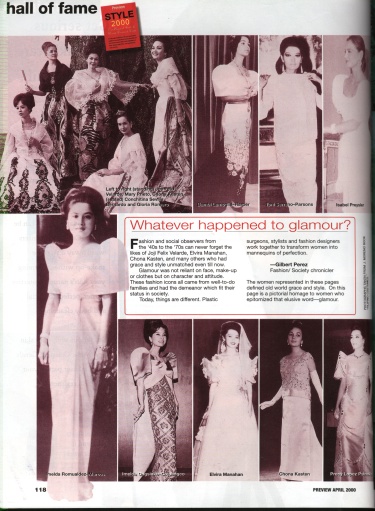
to
Previous Page

Philippine Pageant History...Relive the past !
to
Next Page
